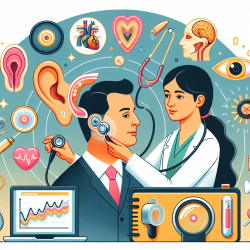Introduction
Perimenopause, a natural transition in a woman's life, often presents unique challenges for both individuals experiencing it and the healthcare professionals (HCPs) providing care. The recent research article "Seeking Health Care for Perimenopausal Symptoms: Observations from The Women Living Better Survey" offers valuable insights into the dynamics of healthcare interactions during this critical phase. This blog aims to distill the findings of the survey to help practitioners improve their skills and encourage further research in this area.
Understanding the Survey Findings
The Women Living Better (WLB) survey gathered responses from 1024 participants who sought healthcare for their most bothersome perimenopausal symptoms. The survey revealed a spectrum of experiences, categorized into positive and negative interactions. These interactions were analyzed to identify themes that contribute to satisfaction or dissatisfaction in healthcare encounters.
Positive Healthcare Interactions
Positive interactions were characterized by:
- Validating Experiences: Patients felt heard and supported when HCPs acknowledged their symptoms as normal for their age or stage in life.
- Matching Explanatory Models: Shared understanding between patients and HCPs regarding the cause and treatment of symptoms fostered satisfaction.
- Supported by a Team: Patients appreciated a team-based approach to care, involving multiple healthcare providers.
- Shared Decision-Making: Collaborative treatment planning, indicated by the use of "we" in patient responses, was positively received.
- Symptom Addressed: Successful therapeutic interventions that addressed prioritized symptoms led to positive experiences.
Negative Healthcare Interactions
Conversely, negative interactions were associated with:
- Invalidating Experiences: Patients felt dismissed or brushed off, particularly when told they were too young for perimenopausal symptoms.
- Mismatch in Expectations: Discrepancies between patient expectations and HCP explanations or treatments led to dissatisfaction.
- Barriers to Treatment: Needing to consult multiple providers or facing high treatment costs were significant barriers.
- Not Feeling Helped: Patients reported inadequate advice or ineffective treatments as sources of dissatisfaction.
Opportunities for Improvement
The survey highlights several opportunities for enhancing perimenopausal care:
- Validation: HCPs can improve patient satisfaction by validating experiences and normalizing symptoms as part of the perimenopausal transition.
- Education and Training: Increased training on the wide range of perimenopausal symptoms can better equip HCPs to provide effective care.
- Shared Decision-Making: Encouraging collaborative treatment planning can enhance patient satisfaction and outcomes.
- Anticipatory Guidance: Providing information about what to expect during perimenopause can prepare patients for the transition and improve healthcare interactions.
Conclusion
By understanding the elements that contribute to satisfying healthcare interactions, practitioners can enhance the quality of care provided to perimenopausal patients. The findings from the WLB survey offer a roadmap for improving patient satisfaction and outcomes during this critical life stage.
To read the original research paper, please follow this link: Seeking Health Care for Perimenopausal Symptoms: Observations from The Women Living Better Survey.










